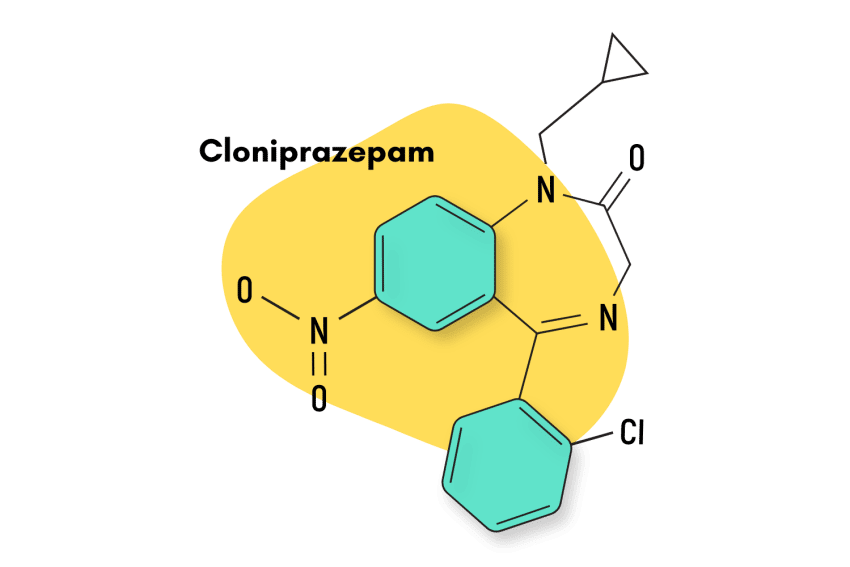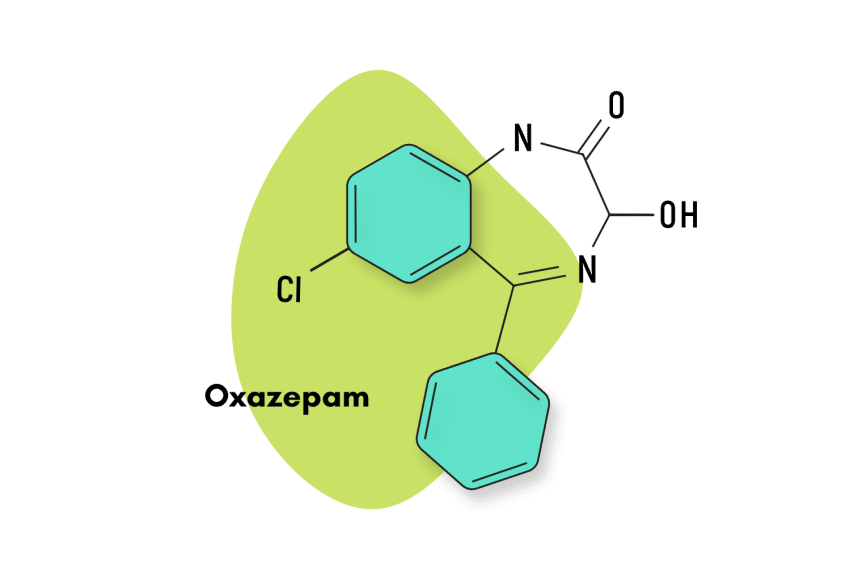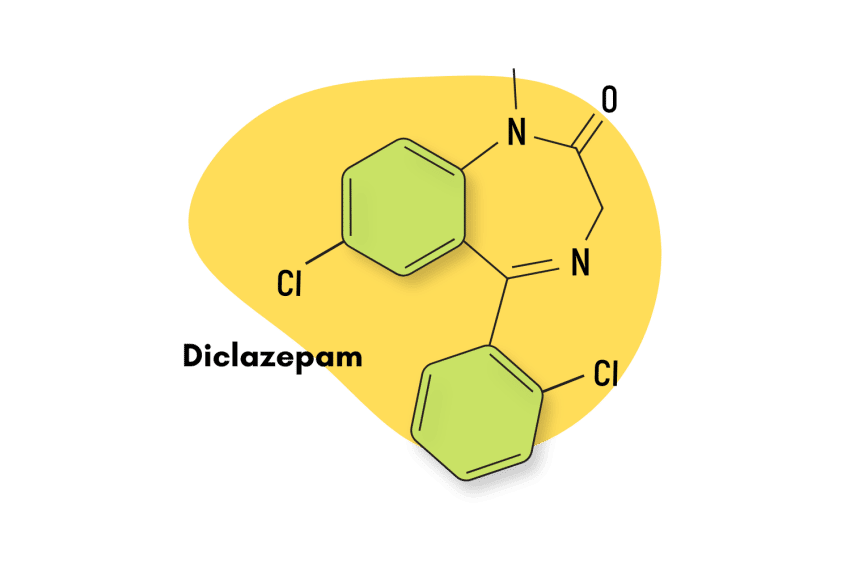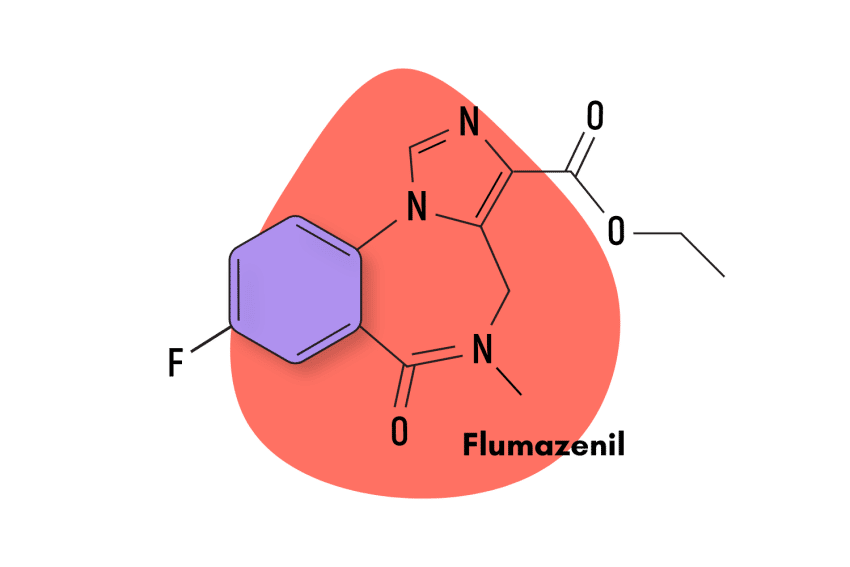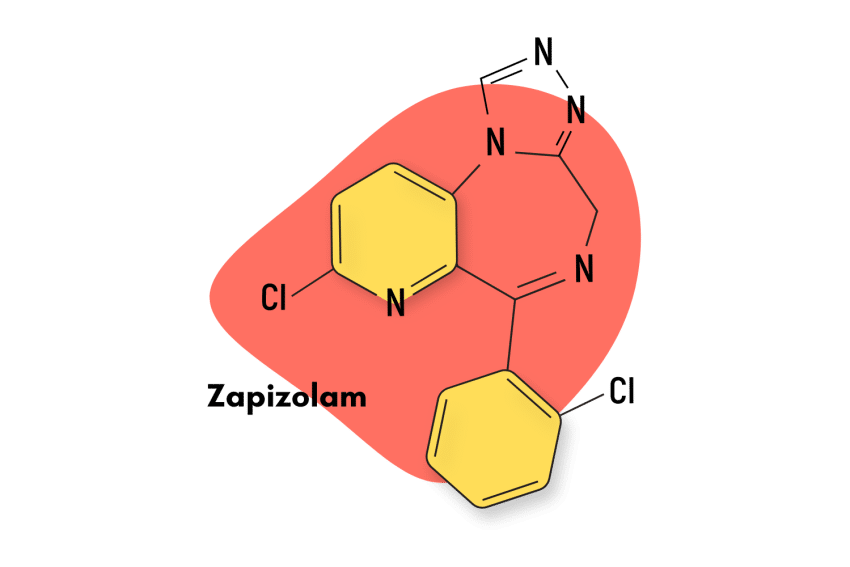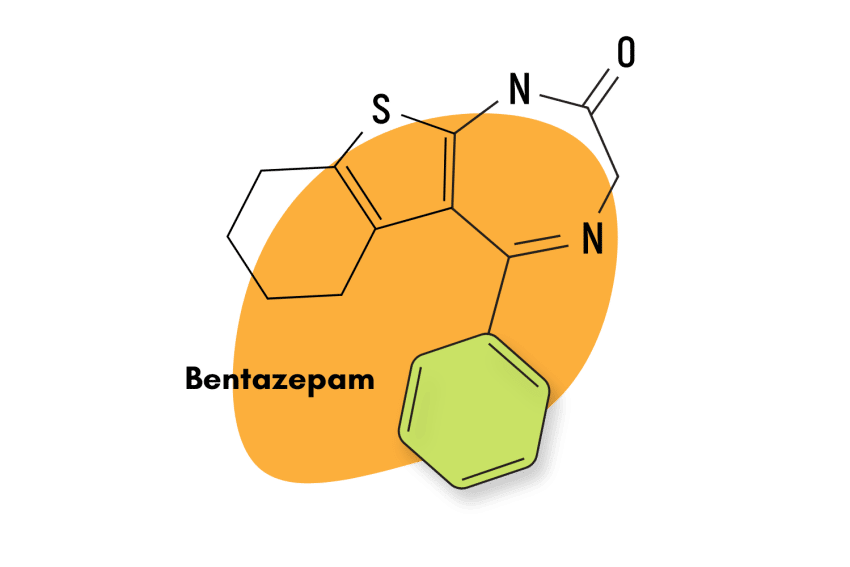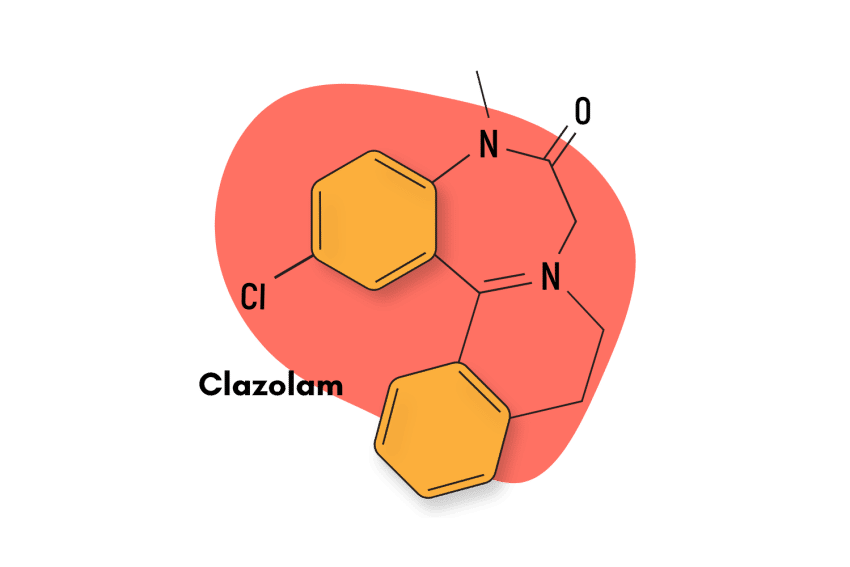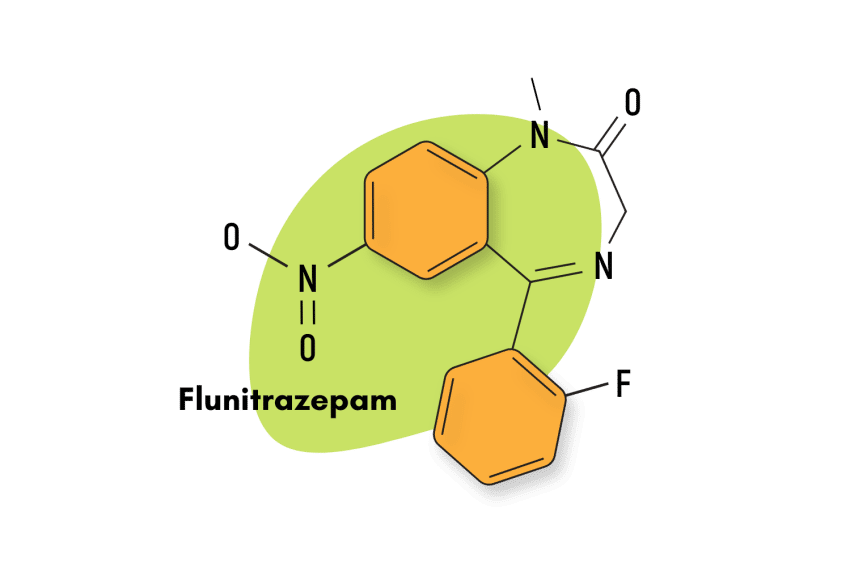Nordazepam (Nordaz) Fact Sheet & Harm Reduction Guide
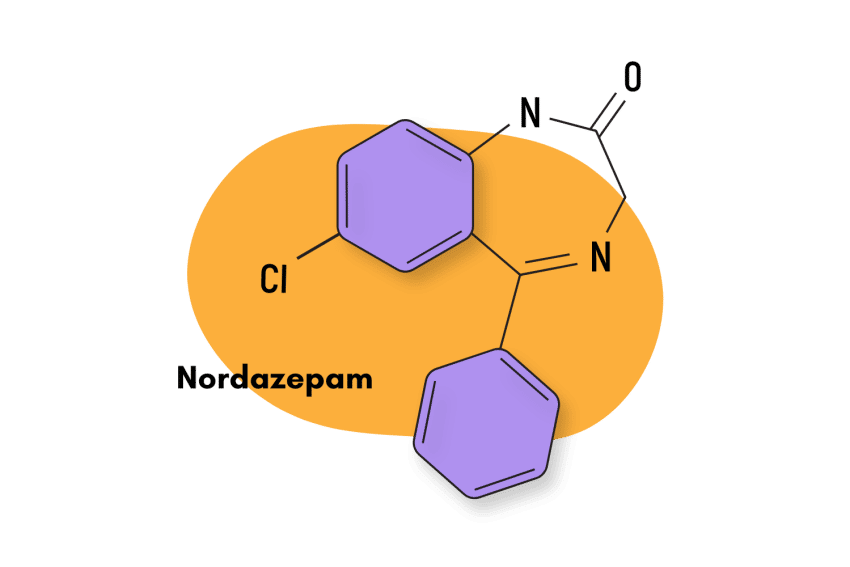
Nordazepam (also known as nordiazepam, desoxydemoxepam, or desmethyldiazepam, and commercially available as Nordaz, Stilny, and Madar) is a traditional 1,4-benzodiazepine derivative.
Nordazepam is one of the few benzodiazepine compounds to occur in nature, as it’s been found in soybeans (Glycine max) and maize corn (Zea mays), although in trace amounts [1].
Nordiazepam also happens to be the principal metabolite for a large number of benzodiazepines such as chlordiazepoxide (Librium), clorazepate, diazepam, medazepam, and prazepam.
This is an interesting situation because nordazepam is one of the longest-lasting benzodiazepines, with an elimination half-life of 36 to 200 hours.
Nordazepam Specs
IUPAC Name: 7-chloro-5-phenyl-1,3-dihydro-1,4-benzodiazepine-2-one
Other Names: Nordaz, Stiny, Madar, Vegesan, Calmday
Metabolism: Nordazepam is mainly metabolized via C3-hydroxylation to form a common metabolite, oxazepam.
Duration of Effects: The duration of effects is long-lasting (36-200 hours). The vast range is partly due to the effects of gender, age, and other factors on the metabolic process.
Benzodiazepine Dosage Equivalency Calculator
**Caution:** Benzodiazepines have a narrow therapeutic window. Dose equivalents may not be accurate in higher doses.
This calculator does not substitute for clinical experience and is meant to serve only as a reference for determining oral benzodiazepine equivalence.
Please consult a medical practitioner before taking benzodiazepines.
How Does Nordazepam Work?
Nordiazepam binds to GABA-A receptor sites. GABA receptors are the chief inhibitory neurotransmitters used by the body. When benzodiazepines bind to them, they produce what’s known as an “allosteric effect,” which potentiates the natural inhibitory function of GABA [2].
Benzodiazepines do this by increasing the opening frequency of the chloride channel found on GABA-A receptors. This allows the passage of negatively charged chloride ions into the neuron, and the inside of the cell becomes hyperpolarized. The effect of hyperpolarization makes the neuron less likely to fire an action potential, the electric signals used by the brain and CNS to send messages.
Fewer action potentials are conducive to a generalized “slowing down” of the nervous system, which results in the anxiolytic, muscle-relaxant, anti-convulsant, and hypnotic properties associated with benzodiazepines.
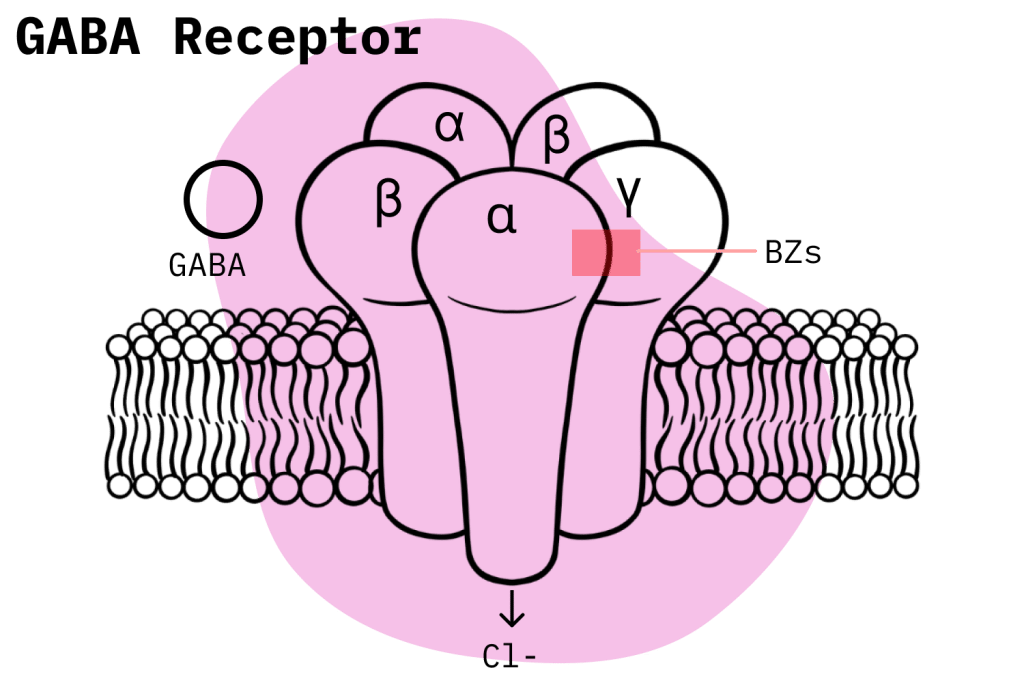
Nordazepam Specifics
As mentioned before, most benzodiazepines function through this basic GABA-mediated pathway, but they’re a multitude of other factors that also influence their pharmacological profiles in a significant fashion.
In the case of nordazepam, it is important to point out that, unlike most benzodiazepines, nordazepam is a partial rather than a full receptor agonist. Partial agonists have limited efficacy at the receptor site when compared to full agonists, and this means that, in general, their effects are less potent. This is certainly the case for nordazepam, particularly in its amnesic and muscle-relaxing effects [3].
Is Nordazepam Safe? Risks & Side Effects
Similarly to most other benzodiazepines, nordazepam is classified in the United States as a Schedule IV compound under the Controlled Substances Act. This means that nordazepam has recognized medical uses but also has the potential to cause physical dependence and withdrawal symptoms, although to a lesser degree than compounds in the Schedule III class.
However, despite their Schedule IV classifications, which would, in theory, make them a lot safer than Schedule I compounds like cannabis and psilocybin (magic mushrooms), the reality is much more complicated.
In the United States, recent trends in polydrug abuse have led to an explosion in benzodiazepine-related fatalities.
For instance, a 2020 study by the CDC discovered that, in that year, benzodiazepines were involved in a total of 12.290 deaths in the United States. This would mean benzodiazepines were present in roughly 16% of opioid-related deaths.
These statistics are worrying, but in the case of nordazepam, there is reason to believe that the risk potential is significantly diminished. As a partial agonist, the potency of nordazepam is less than other benzos. As such, nordazepam also carries a lower likelihood of side effects.
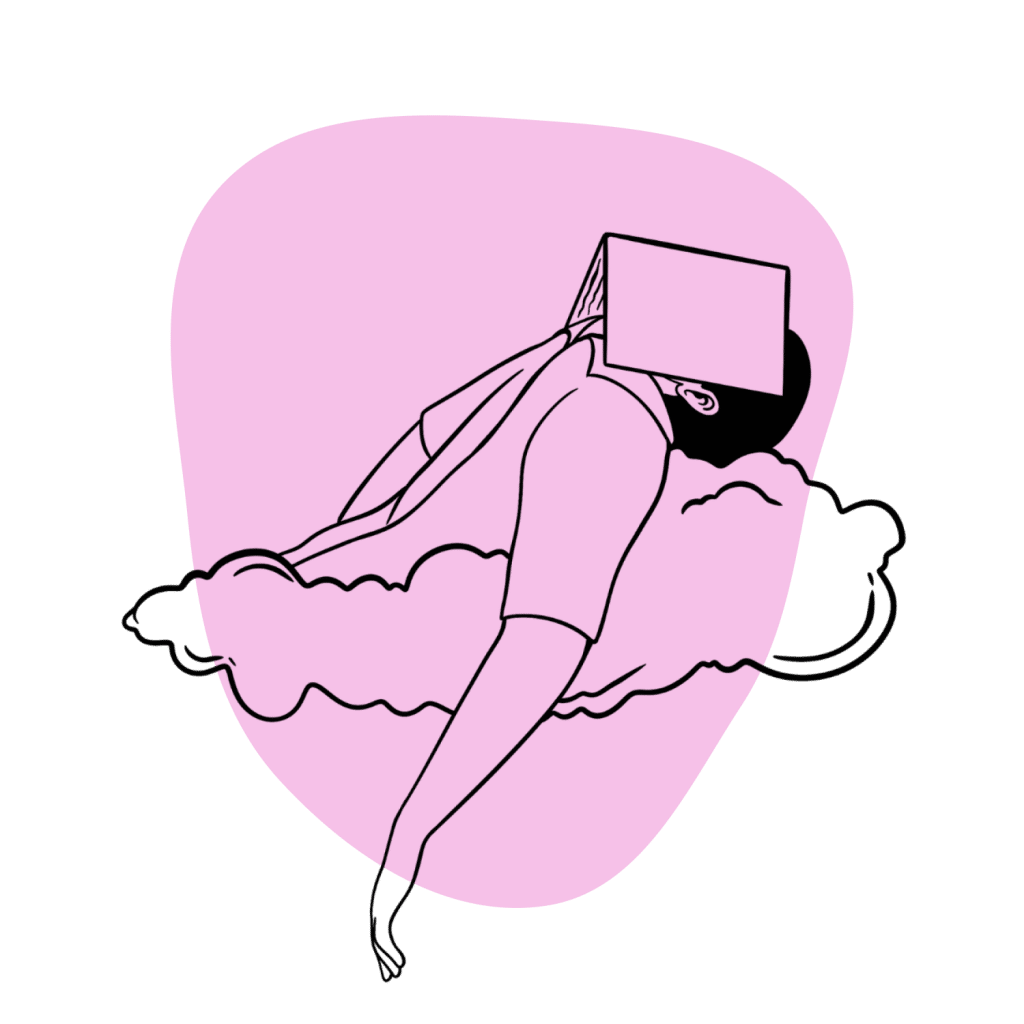
Side Effects of Nordazepam
There is little peer-reviewed information available regarding the side effects of nordazepam. Still, given the fact that it’s a metabolite of diazepam, there’s reason to believe that it has a similar side effects profile and, in any case, all benzodiazepines share a common range of side effects, with only slight individual variations.
The most common side effects of benzodiazepines include the following:
- Blurred vision
- Confusion
- Constipation
- Dizziness
- Drowsiness
- Dry mouth
- Light-headedness
- Memory problems
- Muscle weakness
- Nausea (feeling sick)
- Slurred speech
- Unsteadiness (especially in older people, who may fall and experience injuries)
Some less common side effects of benzodiazepines include:
- Changes in sexual desire
- Difficulty urinating
- Digestive disturbances
- Headaches
- Incontinence (loss of bladder control)
- Increased saliva production
- Low blood pressure
- Rashes
- Sight problems, such as double vision
- Tremors (shaking)
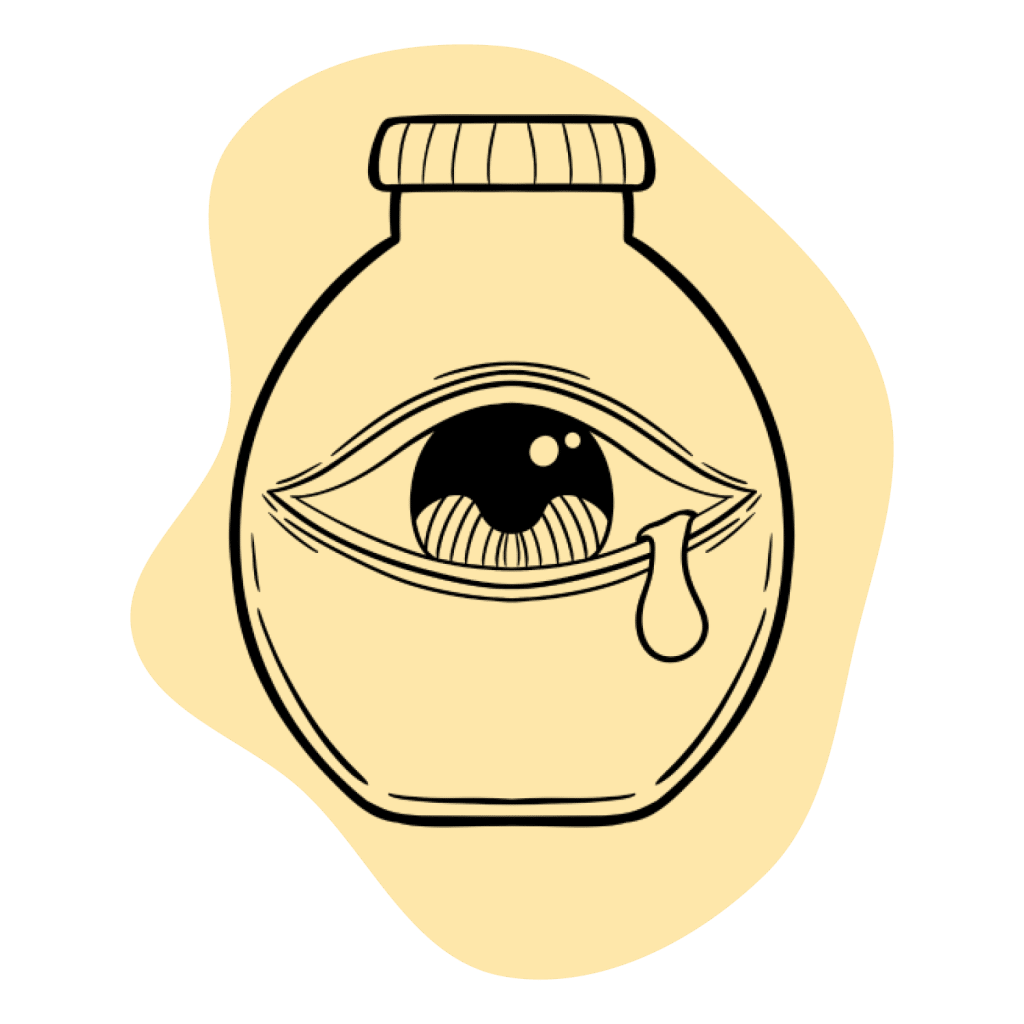
Benzodiazepine Withdrawal & Dependence
The possibility of developing a physical benzodiazepine dependence and the withdrawal symptoms that come with it should be one of the foremost concerns in the mind of anyone currently undergoing or hoping to start a benzodiazepine treatment.
A significant amount of people labor under the misapprehension that physical dependence only comes from recreational misuse: this is an extremely dangerous and mistaken belief. Even where there is no misuse at all, benzodiazepines still have a considerable capacity to cause dependence, a possibility that is increased the longer treatment lasts and the higher the dosage is set. Some benzodiazepines are so adept at causing dependence that doctors only prescribe them for extremely short-term treatments (7-10 days).
In fact, because doctors are now so worried about this possibility, standard practice in the medical world is to try and set benzodiazepine treatments for the shortest time frame possible without compromising the effectiveness of treatment.
Regarding nordazepam, there are a couple of things to consider. Since it is a low-potency compound with a long duration of effects, nordazepam has less of a chance of being abused and therefore is less likely to cause dependence. Benzodiazepines with short half-lives encourage more redosing, and sometimes users will suffer from inter-dose withdrawals, two factors that strongly increase the prevalence of habit formation.
However, at the same time, the slow elimination of nordazepam from the body means that it can potentially start to accumulate in the body over time, especially in older patients and those with hepatic impairments. The build-up of a substance within the body can lead to an increased rate of physical dependence formation.
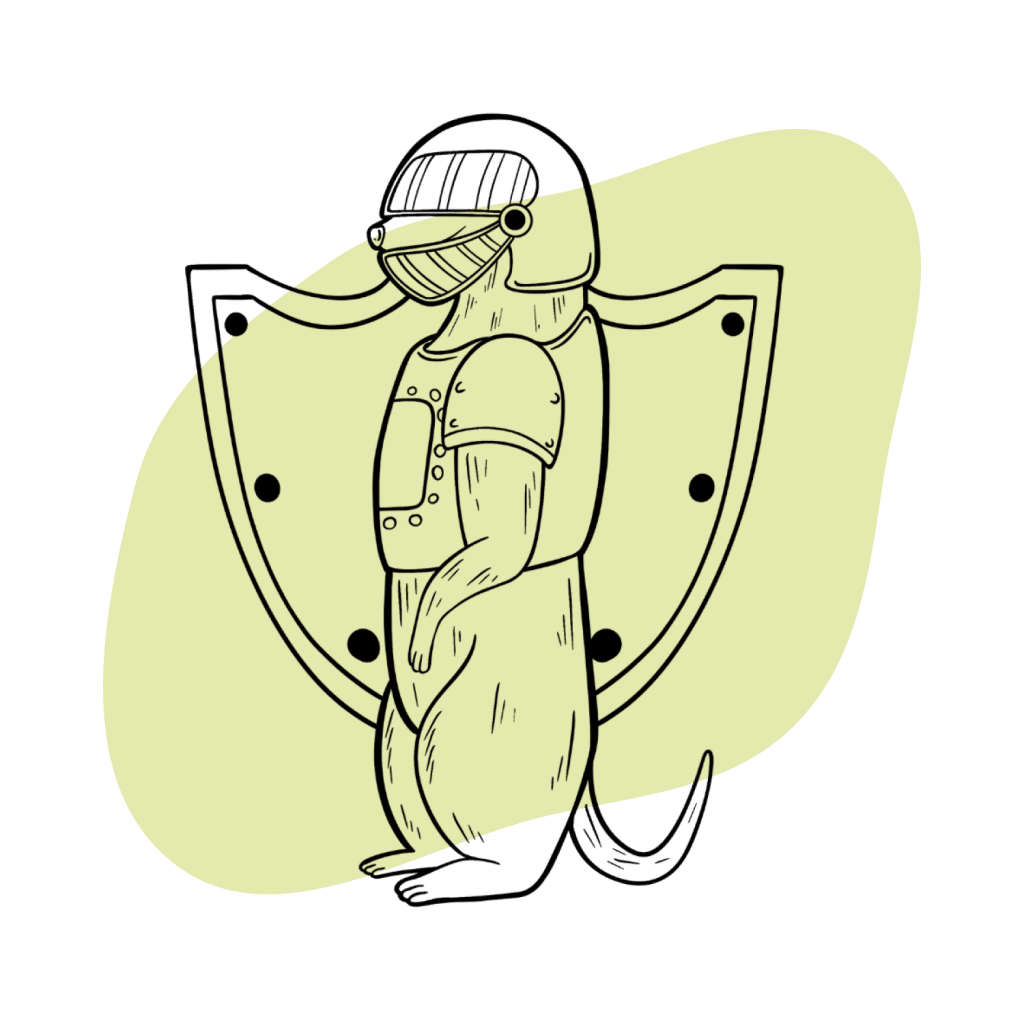
Harm Reduction: Nordazepam
When it comes to benzodiazepines, the most basic, but also the most effective, harm reduction recommendations are to avoid misuse and to limit both the quantity and duration of treatment. It’s not as easy as it sounds, but if users can stick to these simple rules, then they will have done much to limit their risk potential.
And when it comes to recreational users, there are also a couple of rules which can help them stay safe. Recreational users should try their hardest not to mix potent pharmacological drugs, including alcohol. Special care should be given to the concomitant use of compounds that can depress the central nervous system. Combining said drugs is especially deadly because it puts users at risk of respiratory depression, the leading cause of death in drug overdoses.
Benzodiazepine Harm Reduction Tips:
- 🥣 Don’t mix — Mixing benzodiazepines with other depressants (alcohol, GHB, phenibut, barbiturates, opiates) can be fatal.
- ⏳ Take frequent breaks or plan for a short treatment span — Benzodiazepines can form dependence quickly, so it’s important to stop using the drug periodically.
- 🥄 Always stick to the proper dose — The dosage of benzos can vary substantially. Some drugs require 20 or 30 mg; others can be fatal in doses as low as 3 mg.
- 💊 Be aware of contraindications — Benzodiazepines are significantly more dangerous in older people or those with certain medical conditions.
- 🧪 Test your drugs — If ordering benzos from unregistered vendors (online or street vendors), order a benzo test kit to ensure your pills contain what you think they do.
- 💉 Never snort or inject benzos — Not only does this provide no advantage, but it’s also extremely dangerous. Benzos should be taken orally.
- 🌧 Recognize the signs of addiction — Early warning signs are feeling like you’re not “yourself” without the drug or hiding your habits from loved ones.
- ⚖️ Understand the laws where you live — In most parts of the world, benzodiazepines are only considered legal if given a prescription by a medical doctor.
- 📞 Know where to go if you need help — Help is available for benzodiazepine addiction; you just have to ask for it. Look up “addiction hotline” for more information where you live. (USA: 1-800-662-4357; Canada: 1-866-585-0445; UK: 0300-999-1212).
Nordazepam Drug Interactions
Mixing prescription drugs will always increase your risk potential. Users should check with their doctor before they take any compound that might react badly with their prescription drug treatment.
Nordazepam Contraindications
Almost all benzodiazepines share a common set of contraindications. These are:
- Bronchitis
- Chronic obstructive pulmonary disease (COPD)
- Conjunctive use of barbiturates, opiates, or those suffering from alcoholism
- Intellectual disabilities due to frequent paradoxical reactions
- Major depression
- Myasthenia gravis
- Over the age of 65 (high risk)
- Personality disorders
- Sleep apnea
Furthermore, whenever a user is considering taking a new prescription drug, they should always take the time to check what contraindications are listed for it, as this is a common way in which people will unknowingly put themselves at risk.

Proper Dosage
According to French authorities, nordazepam (Nordaz) is to be taken for treating anxiety-related disorders, depending on severity, in either its 7.5 mg or 15 mg formulation and only once a day in the evenings. Sometimes, in extreme cases, a higher dose may be necessary. However, the minimum effective dose should always be sought.
Similar Benzodiazepines
There are plenty of benzodiazepines with comparable characteristics to that of nordazepam.
Oxazolam
Oxazolam is a prodrug for nordiazepam. This means that most of the nordiazepam you consume is eventually converted into oxazepam by your liver. It’s a short-acting compound, so this transformation takes place rapidly within the body. And in terms of effects, oxazolam is known to be virtually identical to nordazepam.
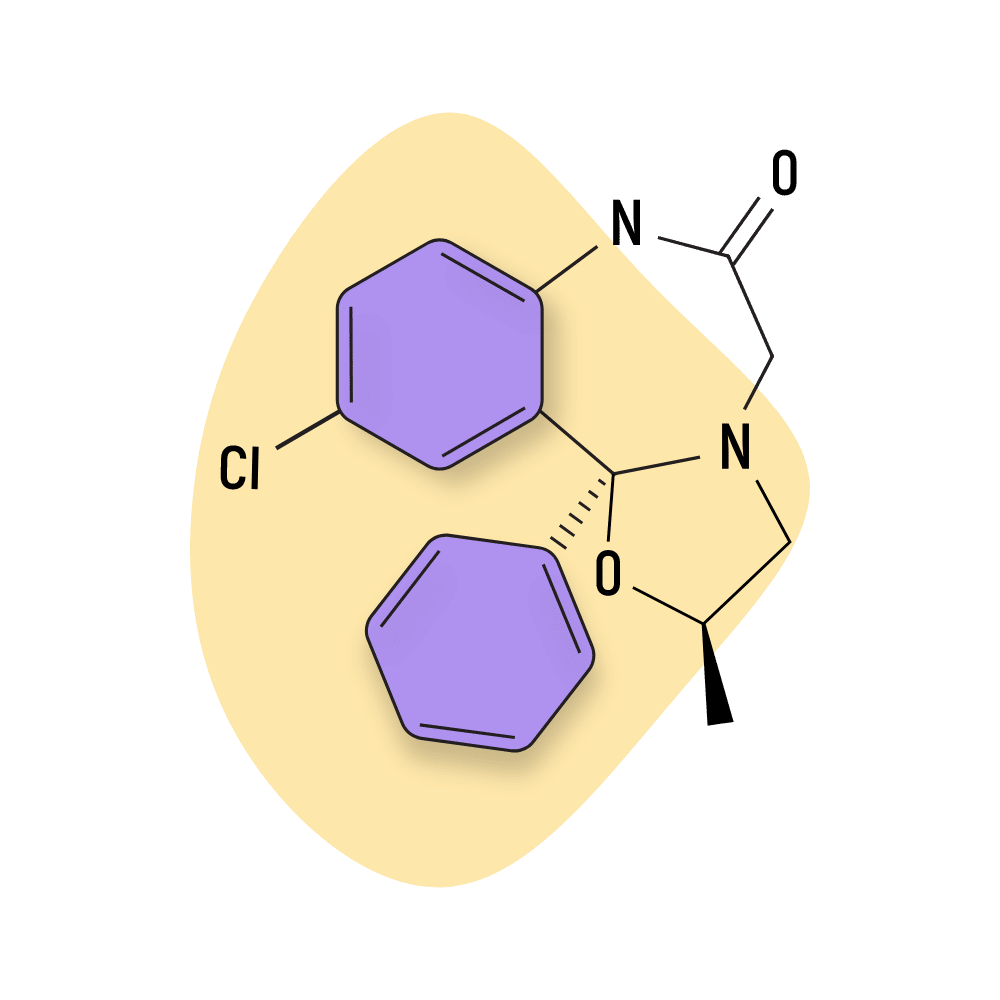
Diazepam
Diazepam (Valium) is not really considered to be a prodrug for nordazepam since it’s a more commercially successful benzodiazepine in its own right, but in technical terms, it is; nordazepam is one of the active pharmacological byproducts of diazepam. Both compounds have comparable pharmacokinetics and similar effects profiles.
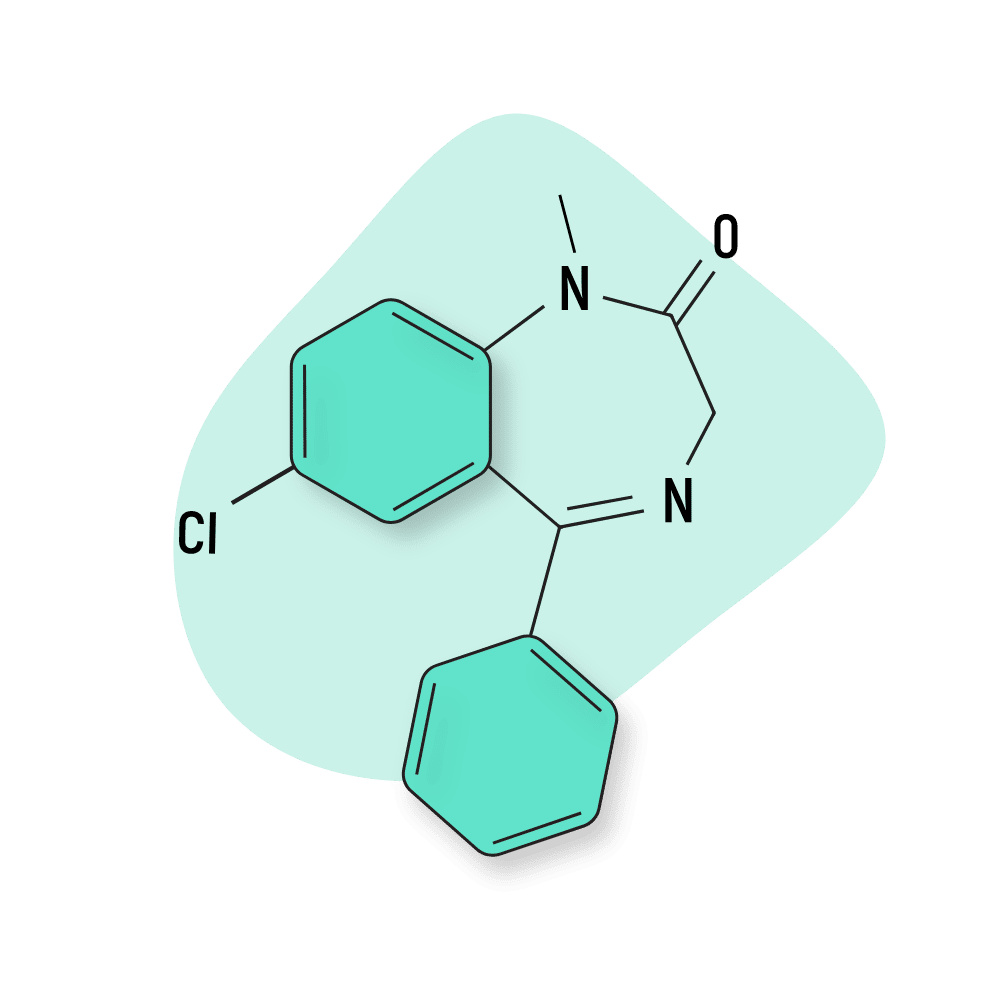
Medazepam
Medazepam is also a prodrug for diazepam, oxazepam and nordiazepam. In this sense, it has similar pharmacology to these compounds. The duration of effects is identical to nordazepam, lasting anywhere from 36 to 200 hours.
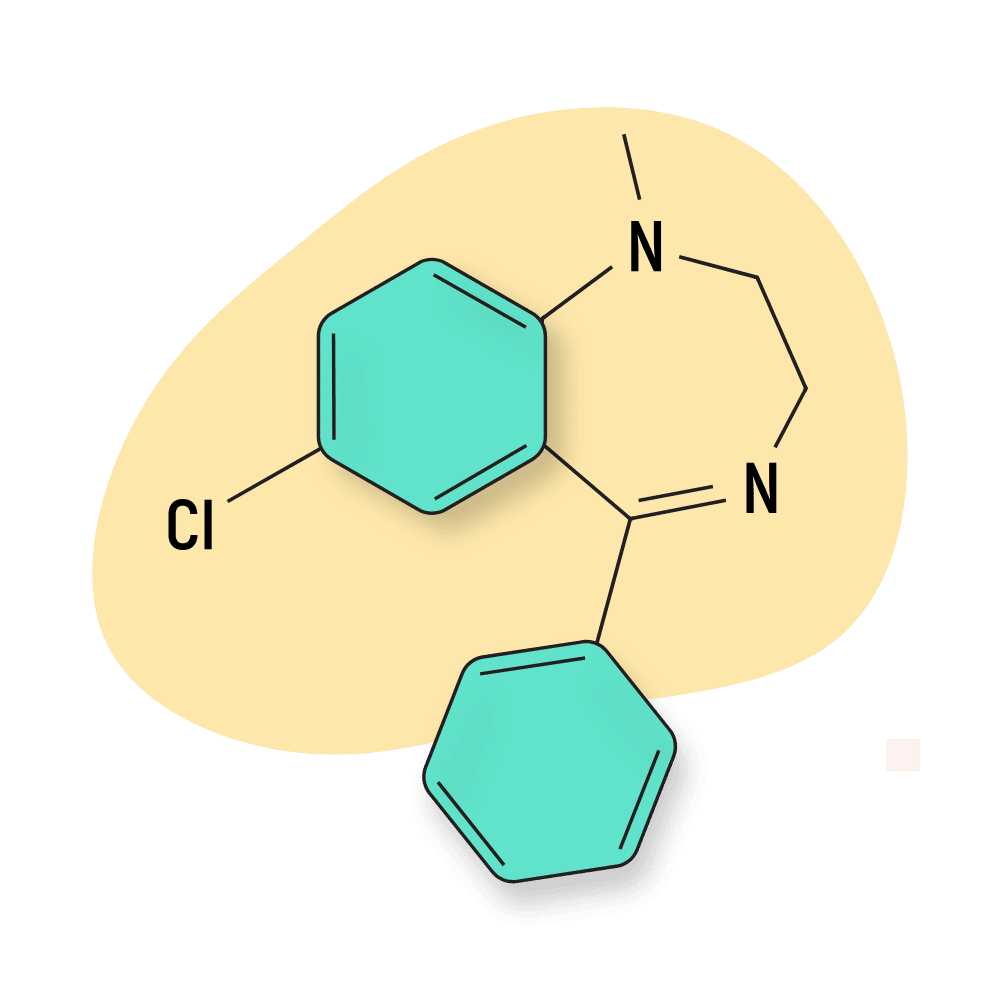
Natural Alternatives to Benzodiazepines
Interested in replacing your benzodiazepine prescription with a natural alternative that offers fewer side effects and less potential to develop dependence? Well, you’re in luck! There’re plenty of natural alternatives that you can try, and no prescription is needed.
Kratom
One of the most popular natural compounds to gain prominence in recent years is the kratom plant (Mitragyna speciosa). This is mainly due to the wide range of effects the kratom plant can produce. It exerts stimulant and euphoric benefits in small doses, similar to coffee. In mid-to-high doses, the kratom plant offers anxiolytic and sedative relief, not unlike the kava plant.
However, users should know that kratom is not without its risks. Kratom can cause physical dependence among users, although large amounts have to be consumed. Since it is a CNS-depressant compound that acts on the body’s opioid receptors when combined with drugs like alcohol, benzodiazepines, or opioids, it can put the user at serious risk.
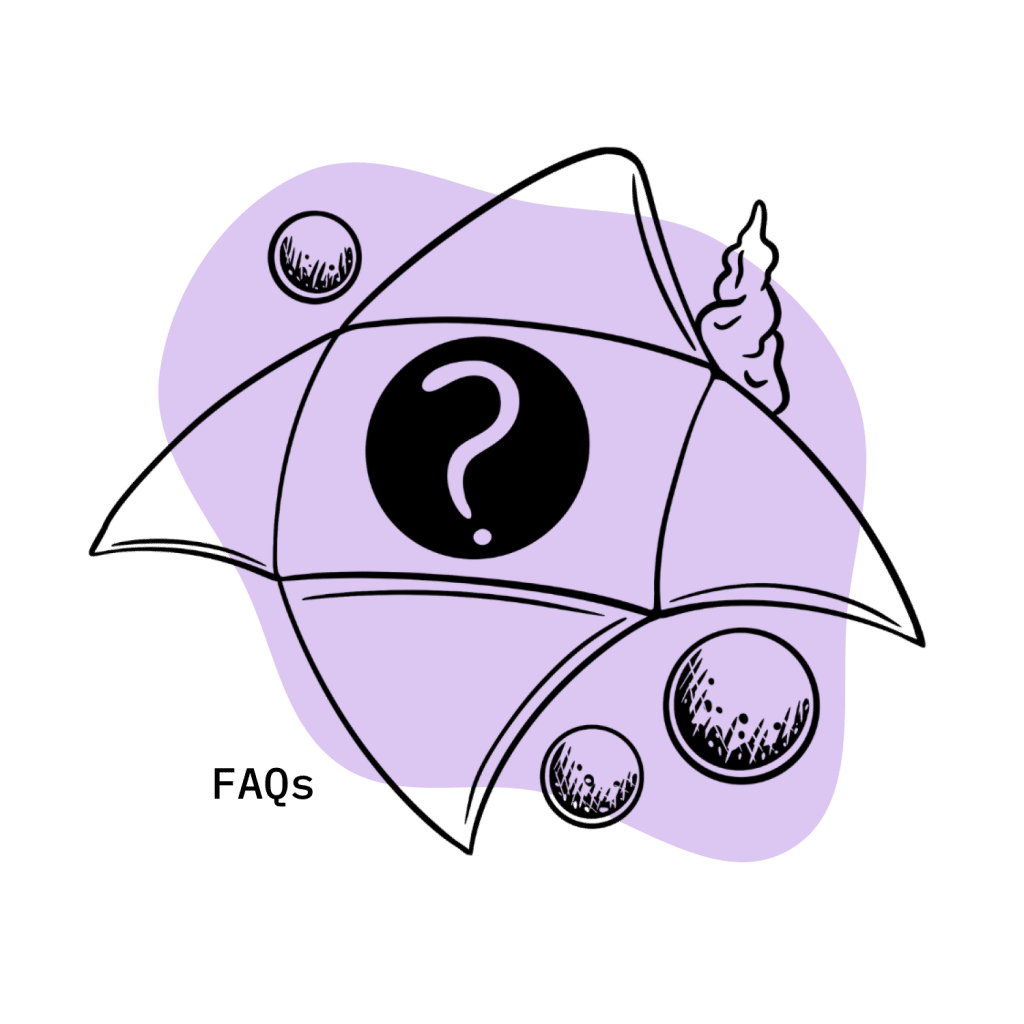
Nordazepam FAQs
What indications is nordazepam approved for?
Nordazepam is used mainly in the treatment of anxiety-related disorders and insomnia.
What formulations is nordazepam available in?
Nordaz is available in oral tablets of either 7.5 or 15 mg.
Does nordazepam have active metabolites?
Yes. The benzodiazepine byproduct of nordazepam, oxazepam, is also pharmacologically active and is more potent than its parent compound. Oxazepam is a full agonist rather than a partial agonist like nordiazepam.
Can nordazepam be used during pregnancy?
No. Nordazepam and most other benzodiazepines can cross the placental barrier and, thus, should not be taken during pregnancy. In extreme cases, it may be done so, but it should be noted that this puts the fetus at risk of experiencing side effects such as hypothermia, hypotonia, and mild respiratory depression. Additionally, nordazepam is also excreted in breast milk and should not be used by lactating mothers.
References
- Unseld, E., Krishna, D. R., Fischer, C., & Klotz, U. (1989). Detection of desmethyldiazepam and diazepam in brain of different species and plants. Biochemical pharmacology, 38(15), 2473-2478.
- Campo‐Soria, C., Chang, Y., & Weiss, D. S. (2006). Mechanism of action of benzodiazepines on GABAA receptors. British journal of pharmacology, 148(7), 984-990.
- Gobbi, M., Barone, D., Mennini, T., & Garattini, S. (1987). Diazepam and desmethyldiazepam differ in their affinities and efficacies at ‘central’ and ‘peripheral’ benzodiazepine receptors. Journal of pharmacy and pharmacology, 39(5), 388-391.

